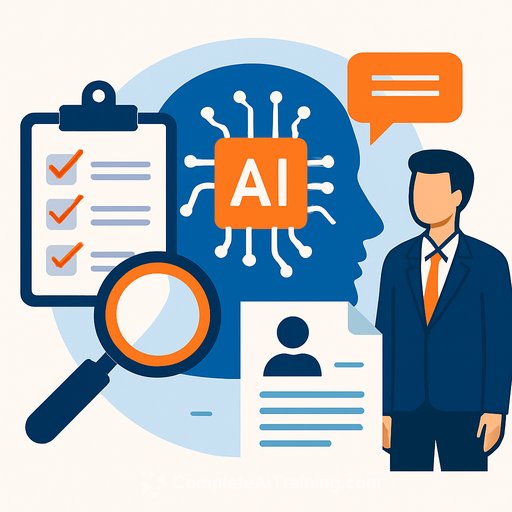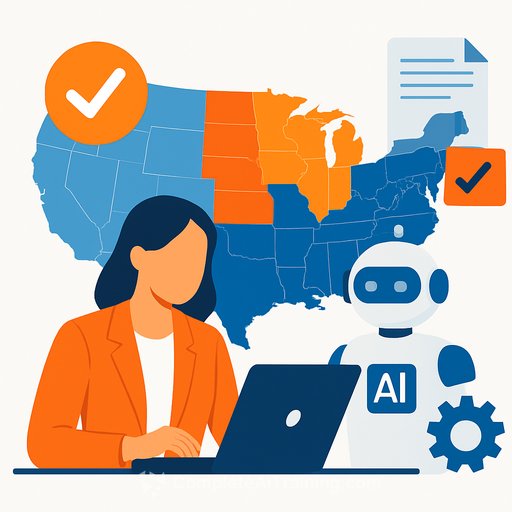Amazon to Cut Up to 30,000 Corporate Roles as AI Reshapes Work
Amazon is preparing to lay off up to 30,000 corporate employees, about 10% of its 350,000-person corporate base, while touching only a small portion of its 1.55 million total workforce. Cuts span human resources, operations, devices, services, and Amazon Web Services.
Leaders were briefed on notification steps, and some employees who didn't comply with return-to-office policies are being classified as voluntary departures, reducing severance exposure. The company is simplifying management layers and leaning on automation, with executive signals that AI will replace repetitive corporate functions.
Why this matters for HR
- AI-driven productivity is compressing administrative and middle-management roles, changing what "essential" looks like.
- RTO policy enforcement is now a cost lever. Missteps here invite legal, reputational, and attrition risks.
- Severance, redeployment, and knowledge transfer must be tightly coordinated to protect continuity.
- Workforce planning needs a fresh baseline: fewer generalized roles, more specialized and AI-adjacent roles.
Immediate actions for HR leaders
- Compliance first: review WARN/mini-WARN and collective consultation thresholds; align timelines, notices, and recordkeeping. For reference, see the U.S. WARN Act overview.
- Selection criteria: define job-related, measurable criteria; run adverse impact analysis before final decisions; document everything.
- RTO enforcement: standardize documentation, apply policies consistently, and create a clear appeal path to avoid claims of constructive or discriminatory treatment.
- Manager enablement: train managers on scripts, FAQs, timelines, and escalation paths; stage notifications with HR present.
- Redeployment and reskilling: post internal roles early, set fast-track review windows, and prioritize transferable skills to retain institutional knowledge.
- Severance and benefits: harmonize packages by jurisdiction; define last-day rules, bonus eligibility, equity treatment, and health coverage extensions.
- Knowledge transfer: require completion plans, system handoffs, and documentation checklists before separation dates.
- Wellbeing support: provide counseling, career coaching, and referral resources; communicate support options proactively.
AI is shrinking repetitive work - redesign the org, don't just reduce it
Leadership expects AI to absorb repetitive corporate tasks. That means fewer layers, fewer manual checkpoints, and more oversight roles that set standards, audit outputs, and handle exceptions.
- Map processes step-by-step and flag tasks that are automate-first vs. human-first.
- Define new roles: prompt/process engineers, data quality leads, automation product owners, AI risk/compliance partners.
- Consolidate tooling under governance to avoid shadow AI and inconsistent quality.
- Adopt an AI risk framework for oversight and documentation. Example: the NIST AI Risk Management Framework.
RTO as "voluntary exit" - handle with care
Classifying RTO noncompliance as voluntary resignation may limit severance but increases dispute risk if policies are unclear or inconsistently enforced. The safest path is clarity plus evidence.
- Issue written policy updates with location-specific requirements and reasonable notice periods.
- Maintain auditable logs of attendance, exceptions, and prior warnings.
- Apply standards consistently across teams and levels; monitor for disparate impact.
- Offer a brief cure window and a documented appeal process.
- Set a decision tree: voluntary resignation, performance route, or separation with severance - and stick to it.
Metrics to steer the transition
- Time-to-notify, time-to-separate, and compliance to legal timelines.
- Adverse impact indicators by protected class and job family.
- Internal redeployment rate and 90-day retention of redeployed employees.
- AI adoption: % automated workflow steps, exception rates, rework rates, and audit findings.
- Manager span-of-control before vs. after; decision latency improvements.
- Productivity signals: cycle time, backlog, SLA adherence, and quality benchmarks.
Build the next skill stack
As AI takes routine work off the table, surviving roles skew toward problem framing, oversight, data integrity, and cross-functional orchestration. Upskilling now reduces future cuts and stabilizes delivery.
- Prioritize training for analytics literacy, prompt design, workflow automation, and AI policy/compliance.
- Fund short, job-relevant programs and measure application in real workflows within 30-60 days.
Need structured options for HR and adjacent teams? Explore practical tracks here: AI courses by job.
The bottom line for HR
This is a cost move, but it's also a design move. Treat it as the inflection point to rebuild processes, clarify policies, and reskill teams around AI-enabled work. Done well, you reduce risk now and prevent a second round later.
Your membership also unlocks:






